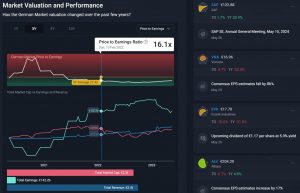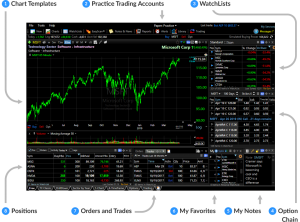
Illustrative Examples

This section provides concrete examples of how real-world stock market scenarios would be displayed on the live dashboard, illustrating its functionality and user experience. We will examine a hypothetical scenario, a visual representation of user interaction, and the presentation of different alert types.
Hypothetical Stock Market Scenario
Let’s imagine a scenario involving the fictional company “TechCorp” (TCORP). On a particular day, TCORP’s stock price opens at $150. Throughout the day, the price fluctuates, reaching a high of $155 and a low of $148 before closing at $152. The trading volume is significantly higher than average, indicating increased investor activity. The dashboard would display this information using a candlestick chart showing the price movements throughout the day, with clear markers for the open, high, low, and close prices.
A separate indicator would show the trading volume as a bar graph, visually highlighting the increased activity. Furthermore, a news feed would potentially include a relevant article discussing the surge in trading volume, possibly attributing it to a recent product announcement. Key figures like the daily percentage change (+1.33%), the current price ($152), and the trading volume (e.g., 10 million shares) would be prominently displayed.
User Interaction with the Dashboard
Imagine a screenshot depicting a user actively engaged with the dashboard. The user’s cursor hovers over a specific point on the candlestick chart for Apple (AAPL), revealing a tooltip displaying the exact price and volume at that particular moment in time. A smaller window displays a real-time news feed showing recent headlines relevant to AAPL, including a breaking news alert about a potential regulatory change.
Another section of the screen shows a personalized watchlist with several stocks, each with color-coded indicators showing their current performance relative to their opening prices. The overall visual design is clean and intuitive, using a consistent color scheme and clear labeling. The user’s interaction, highlighted by the cursor and tooltip, emphasizes the dashboard’s interactivity and its ability to provide granular detail on demand.
The color-coding of the watchlist instantly communicates the performance of each asset, creating a quick and efficient overview. This seamless integration of information enhances the user experience, enabling quick decision-making based on readily available and visually presented data.
Alert Presentation
The dashboard would present different alert types clearly and effectively. A price threshold alert, set by the user for TCORP at $155, would appear as a prominent pop-up notification with a clear indication that the price has reached or exceeded the predefined threshold. This notification would include the current price, the time the threshold was reached, and a direct link to the TCORP stock details page within the dashboard.
A news alert related to a significant event, such as a sudden drop in the price of a specific stock due to unexpected negative news, would appear as a banner at the top of the dashboard, highlighting the relevant headline and providing a summary of the news. These alerts would be distinguishable by their visual design, ensuring that users can quickly identify the type and importance of each notification.
For instance, price alerts might use a bright yellow background, while news alerts might use a distinct color and icon. The system would avoid alert fatigue by prioritizing critical alerts and providing options for users to customize their alert preferences.

